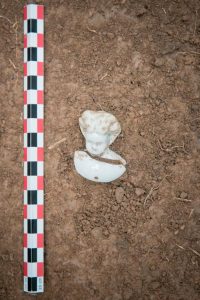Remains of a 200-year-old plantation manager’s building, owner’s mansion and a kitchen building were unearthed through excavation in La Caroline, north-eastern French Guiana. The plantation was one of hundreds functioning between 18th-19th centuries in that area of South America.

Archaeologists of the University of Wrocław in co-operation with Direction des affaires culturelles de Guyane conducted excavations at the former plantation site. During that time a team of University of Pennsylvania archaeologists studied the remains of the slave and worker quarters. The establishment covered over 100 hectares and functioned from the end of 18th century until 70s or 80s of the 19th century. As it used slave labour, its end is connected with the end of slavery. The plantation at first lived of cultivation of achiote, used to make red body paint and lipstick, but later switched to cotton and cloves.

The number of slave plantations in the area of French Guiana, and their layouts are unknown. Historical maps show only a part of them and show their location not accurately. Therefore airborne LiDAR technology was introduce to discover the plantations and recognize the internal layouts. In the past archaeologists were mostly concerned with pre-Columbian area sites, but research of the colonisation period sites and is slowly growing.

The team of Polish archaeologists managed to partially unearth the kitchen building containing remains of a furnace, a fragment of the owner’s building with stairs leading to the main entrance and the house of the plantation’s manager. The houses were build by mounting poles and filling the spaces between them with local stones or bricks. The plantation owner’s house was placed in the centre and surrounded by residential and utility buildings. Among the latter were the kitchen, the manager’s house with a workshop, drying room, stable and buildings for slaves or workers. Artificial terraces strengthened with blocks of stone and monumental stairs leading to a canal were found in a well-preserved condition. The canal was used for floating cargo to the nearby river and onward to the seaport in Cayenne.

Among the finds were numerous objects that were crafted in Europe. The small finds included numerous kaolin clay tobacco pipes imported from France, Holland and the British Isles, pieces of imported pottery and numerous glass bottles.
(after Nauka w Polsce & Maksym Mackiewicz)